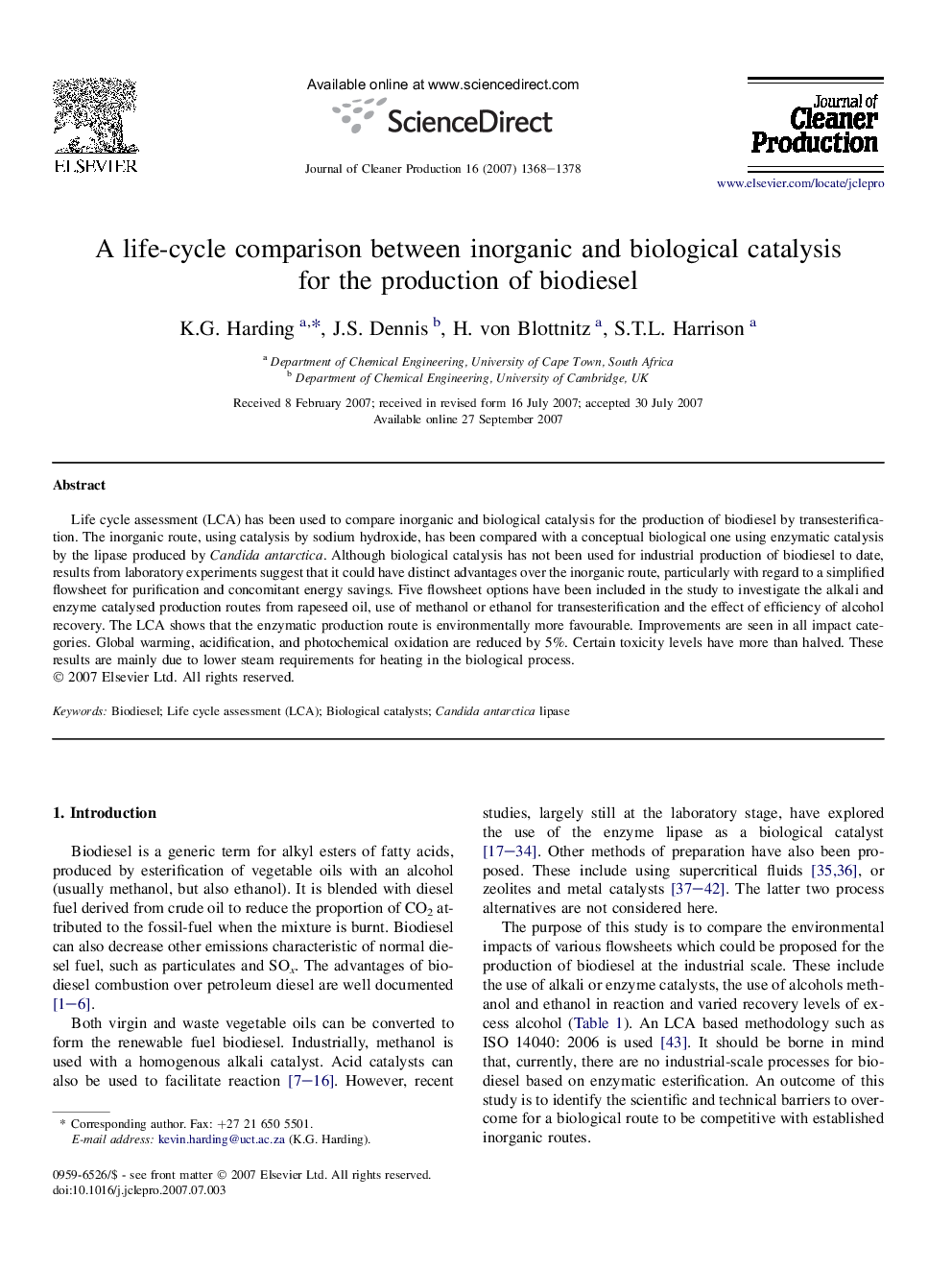| Article ID | Journal | Published Year | Pages | File Type |
|---|---|---|---|---|
| 1746452 | Journal of Cleaner Production | 2008 | 11 Pages |
Life cycle assessment (LCA) has been used to compare inorganic and biological catalysis for the production of biodiesel by transesterification. The inorganic route, using catalysis by sodium hydroxide, has been compared with a conceptual biological one using enzymatic catalysis by the lipase produced by Candida antarctica. Although biological catalysis has not been used for industrial production of biodiesel to date, results from laboratory experiments suggest that it could have distinct advantages over the inorganic route, particularly with regard to a simplified flowsheet for purification and concomitant energy savings. Five flowsheet options have been included in the study to investigate the alkali and enzyme catalysed production routes from rapeseed oil, use of methanol or ethanol for transesterification and the effect of efficiency of alcohol recovery. The LCA shows that the enzymatic production route is environmentally more favourable. Improvements are seen in all impact categories. Global warming, acidification, and photochemical oxidation are reduced by 5%. Certain toxicity levels have more than halved. These results are mainly due to lower steam requirements for heating in the biological process.
